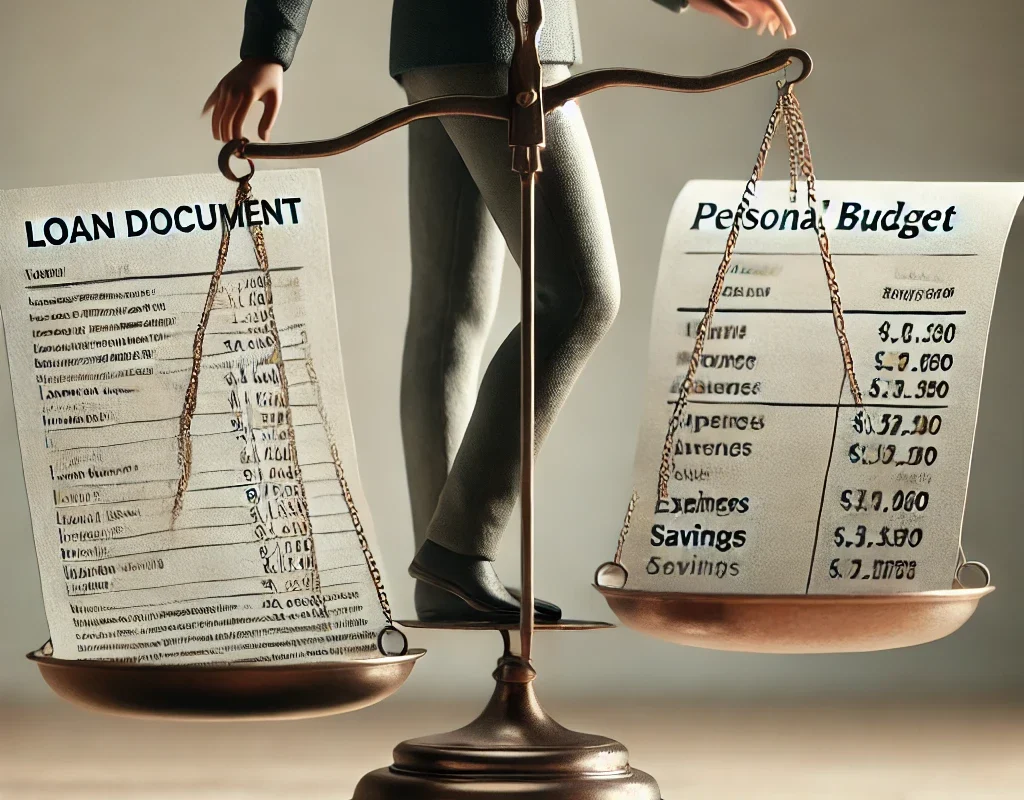In today’s fast-paced world, borrowing has become a common part of our financial lives. Loans, credit cards, and mortgages are integral tools that help us finance dreams, meet emergencies, and build futures. However, with the availability of easy credit comes the risk of overextending your finances, which can lead to long-term financial strain.
In this guide, we’ll explore how to borrow responsibly while keeping your financial health intact. You’ll learn practical strategies to ensure your debts remain manageable and aligned with your income, expenses, and long-term financial goals.
The Basics of Responsible Borrowing
Borrowing money is often necessary, but responsible borrowing requires a solid understanding of your financial situation. Before applying for any loan or credit, it’s important to evaluate why you’re borrowing, how much you need, and how it will impact your future budget.
The first step is understanding that not all debt is bad. Mortgages, for example, help you invest in a home, while student loans can lead to increased earning potential. However, high-interest consumer debt like credit cards should be approached with caution. Always have a clear purpose when borrowing, and consider whether the loan will add long-term value to your life or simply fund unnecessary expenses.
Assessing Your Financial Situation
One of the keys to borrowing responsibly is having a deep understanding of your current financial standing. Before you borrow, ask yourself:
- How stable is your income?
- What are your current monthly expenses?
- How much savings do you have for emergencies?
- How much debt do you already owe?
A detailed budget will give you a clear view of how much you can realistically afford to borrow without stretching your finances. Your debt-to-income (DTI) ratio is a critical factor here. Lenders typically consider a DTI ratio under 36% as a sign of healthy borrowing capacity. If your ratio is higher, you may already be over-leveraged and should reconsider taking on additional debt.
The Importance of Setting Clear Borrowing Goals
When you borrow money, it’s essential to have a clear, defined purpose for the loan. Ask yourself why you need to borrow and what you’re borrowing for. If you’re taking out a loan for a home or education, these can be considered investments in your future. On the other hand, borrowing for short-term luxuries, vacations, or non-essential items might put you on a dangerous financial path.
Having well-defined goals can help you stay focused and avoid borrowing more than necessary. For instance, if you need a car, determine exactly how much you need rather than borrowing an amount that would allow you to purchase a more expensive vehicle.
Choosing the Right Type of Loan
Not all loans are created equal, and choosing the right type is crucial for maintaining financial stability. Understanding the difference between secured and unsecured loans, fixed and variable interest rates, and repayment terms can significantly impact your borrowing experience.
- Secured Loans: These loans are backed by collateral, such as a home or car. They typically have lower interest rates but come with the risk of losing your asset if you default.
- Unsecured Loans: These loans don’t require collateral but often come with higher interest rates, making them riskier and more expensive in the long term.
Before committing to any loan, research all your options. Comparison shopping for interest rates and loan terms from different lenders can help you secure the most favorable terms. Always read the fine print to ensure you fully understand the implications of your loan, including fees, penalties, and the exact cost of borrowing.
Staying Within Your Borrowing Limits
One of the most crucial aspects of borrowing responsibly is setting and sticking to borrowing limits. While lenders may offer you more credit than you initially anticipated, accepting it can lead to financial overextension. Keep in mind that just because you qualify for a loan doesn’t mean you should take it.
Set a maximum borrowing limit based on your monthly budget and how much disposable income you have after covering necessities like housing, utilities, and food. This ensures that your loan payments don’t exceed a comfortable portion of your income and that you still have room for savings and emergencies.
The Consequences of Overextending Your Finances
When you borrow beyond your means, you risk falling into a cycle of debt that can be difficult to escape. High monthly payments can stretch your budget thin, making it difficult to cover other expenses and leading to further borrowing. This, in turn, can negatively affect your credit score, increase stress, and ultimately result in financial instability.
Overextending your finances also reduces your ability to save for future goals, such as retirement, education, or travel. In the worst cases, it can lead to defaulting on your loan, which may result in legal action, wage garnishment, or even bankruptcy.
Credit Card Management: A Key Factor in Borrowing
Credit cards are a double-edged sword in the borrowing world. They offer convenience and flexibility, but high interest rates and easy access can quickly lead to spiraling debt. Using credit cards responsibly is a critical part of managing overall borrowing habits.
Start by paying off your full balance every month to avoid interest charges. If this isn’t possible, ensure that you make more than the minimum payment to reduce the overall cost of borrowing. Avoid using credit cards for unnecessary purchases or to cover shortfalls in your budget, as this can lead to deeper financial trouble.
Consider setting up automatic payments to ensure you never miss a due date, as missed payments can lead to late fees and damage your credit score.
Building a Solid Repayment Plan
Every time you borrow, you should have a solid repayment plan in place. This means not only calculating your monthly payments but also considering the long-term implications of the loan. Ask yourself:
- Can I realistically afford these payments every month?
- Do I have a backup plan in case of emergencies or loss of income?
- How long will it take me to pay off the loan, and what is the total cost of borrowing?
Creating a timeline for repayment helps you stay accountable and ensures you don’t drag out payments unnecessarily, which can lead to paying more interest over time. If possible, prioritize paying off high-interest debt first to minimize overall costs.
Understanding Interest Rates and Fees
One of the most important factors to consider when borrowing is the interest rate. Whether it’s a loan or a credit card, the interest rate determines how much you’ll pay in addition to the principal amount borrowed. Small differences in interest rates can have a significant impact over the life of the loan, so it’s crucial to shop around for the best rate.
In addition to interest, be aware of any fees associated with the loan, such as origination fees, prepayment penalties, or late fees. Understanding the total cost of borrowing—including both interest and fees—will give you a clearer picture of what you’re committing to financially.
Negotiating Loan Terms
Many borrowers are unaware that loan terms can often be negotiated. Whether you’re applying for a mortgage, personal loan, or business loan, don’t be afraid to ask for better terms. This could include negotiating a lower interest rate, extending the repayment period, or reducing fees.
Lenders may be willing to adjust terms, especially if you have a good credit score or offer collateral. Negotiating the terms before signing the agreement can save you significant amounts of money in the long run.
You can also read; How to Find the Best Online Loan Providers for Quick Approval
Maintaining Good Credit: The Foundation of Borrowing
Your credit score is a crucial factor in determining your ability to borrow, the interest rates you’ll be offered, and the amount of credit you can access. A high credit score opens the door to better loan terms, while a low score can limit your options and increase borrowing costs.
To maintain a healthy credit score, focus on paying bills on time, keeping credit card balances low, and not applying for too much credit at once. Regularly checking your credit report for errors and correcting them can also help improve your score.
A strong credit history is one of your greatest assets when it comes to borrowing, so make it a priority to keep your credit in good standing.




